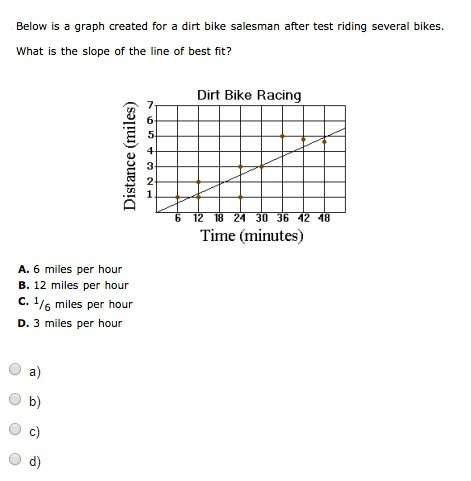
Mathematics, 12.08.2020 07:01 pryncesz2859
Suppose Henry is a high school student who enjoys playing video games. One game he especially enjoys is played on a personal computer and involves using a mouse in order to play. Because Henry is such a skilled gamer, he always wins when playing against his friends. In order to let his friends win a few games, while developing his manual dexterity, Henry occasionally operates the mouse with his non-dominant left hand. Henry senses that his reaction time is not as fast when using his left hand. He wonders if this is the case for all high school student gamers that are right-handed, so he decides to conduct an experiment.
Henry randomly selects 32 right-handed high school students who claim to play at least 1 hour of video games each day. He then administers a test of reaction time to each student. The test consists of clicking a small dot on the computer screen when the color of the dot changes from red to blue. Each student performs the test with their right hand and then performs the test with their left hand. Henry records each student's right-hand reaction time and left-hand reaction time in milliseconds (ms). He then calculates the difference in right-hand reaction time and left-hand reaction time for each student. The sample results are summarized in the table.
Variable
description Sample
mean (ms) Sample standard
deviation (ms) Standard error
estimate (ms)
right-hand reaction time x??R=325.55801 sR=112.36310 SER=19.86318
left-hand reaction time x??L= 346.90739 sL=177.79582 SEL=31.43016
difference (right hand ? left hand)x??=?21.34938 s=190.06807 SE=33.59961
Henry then conducts a matched-pairs t?test at a significance level of ?=0.05 to test the null hypothesis H0:?=0 against the alternative hypothesis H1:?<0. The parameter ? represents the mean difference of right-hand reaction times and left-hand reaction times for high school student gamers that are right-handed. Given that Henry randomly selected the students for his sample, and the sample data set of calculated differences are roughly normally distributed without any outliers, the conditions for a matched?pairs t?test are satisfied.
Compute the t?statistic and p?value for Henry's matched?pairs t?test. Please round your answers to the nearest three decimal places.
t =
p =
Select the correct decision and conclusion for Henry's hypothesis test at the ?=0.05 significance level.
Because p<?, Henry should reject the null hypothesis. Thus, there is sufficient evidence to suggest that students' right-hand reaction times are less than their left-hand reaction times.
Because p>?, Henry should fail to reject the null hypothesis. Thus, there is not sufficient evidence to suggest that students' right-hand reaction times are less than their left-hand reaction times.
Because p>?, Henry should reject the null hypothesis. Thus, there is sufficient evidence to suggest that students' right-hand reaction times are less than their left-hand reaction times.
Because p<?, Henry should fail to reject the null hypothesis. Thus, there is not sufficient evidence to suggest that students' right-hand reaction times are shorter than their left-hand reaction times.

Answers: 3
Another question on Mathematics

Mathematics, 21.06.2019 12:30
Cara earns a base pay of $1800 per month at a car dealership plus a commission of 6% of her sales. what are caras total earning in a month in which she sells $40000 worth of merchandise
Answers: 3

Mathematics, 21.06.2019 14:30
Acable company wants to provide cell phone service for residents on an island. the function for the cost of laying the cable from the island to the mainland is c(x)= 6.500 square root x2+4, where x represents the length of the cable in feet. what are the domain and range of the function? a) domain: all real numbers range: all real numbers greater than or equal to 17,000 b) domain: all real numbers greater than or equal to 0 range: all real numbers greater than or equal to 17,000 c) domain: all real numbers greater than or equal to 0 range: all real numbers greater than or equal to 13,000 d) domain: all real numbers greater than or equal to 13,000 range: all real numbers greater than or equal to 0
Answers: 3


You know the right answer?
Suppose Henry is a high school student who enjoys playing video games. One game he especially enjoys...
Questions


History, 07.12.2020 23:30

History, 07.12.2020 23:30

English, 07.12.2020 23:30


History, 07.12.2020 23:30

Social Studies, 07.12.2020 23:30

Spanish, 07.12.2020 23:30



Mathematics, 07.12.2020 23:30

Mathematics, 07.12.2020 23:30

Health, 07.12.2020 23:30

Mathematics, 07.12.2020 23:30



Biology, 07.12.2020 23:30



History, 07.12.2020 23:30




